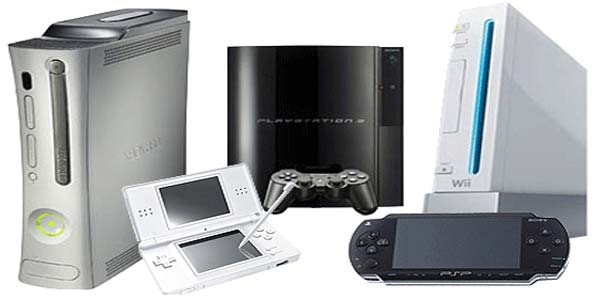As time goes on, it’s only natural that games and consoles are adjusted for inflation and increase in price. Along with increased production and material costs, consoles have been getting higher and higher. However, I believe there is a point where it becomes clear that consoles are becoming too expensive. With E3 looming ever closer, it’s an important time to inspect the prices of consoles and wonder exactly why certain systems are undergoing ‘average’ sales despite the growing industry. Simply put, they’re too expensive.
First, I’ll inspect the handhelds, since their sales numbers are readily available. The DS and PSP launched at $149 and $249 respectively. While the PSP did boast better graphics and acted like a portable PS2, the $100 difference between it and the DS, which featured a touch screen just as the tablet fad was beginning, made the DS outperform it. The DS sold 1.34 million copies in the first week of each area, while the PSP sold 1.26 million. Over time, the DS easily surpassed the PSP in sales, despite having worse specs. Now, accounting for inflation, the DS and PSP would be sold at $177 and $303 if they launched now. Their successors cost $250 and $300 (technically $250, but $300 for the full version with all of the advertised features).
While Sony did attempt to lower their prices, they cut out crucial features which leads me to point out $300 as its launch price, rather than $250. Its price remained consistent. On the other hand, Nintendo raised them—even accounting for inflation. This put them both in the same situation and price range as the PSP—two good systems, both a little too pricey for the average consumer. Nintendo was quick to cut the price back to levels reminiscent of their successful DS—even cheaper, accounting for inflation, than the first DS at launch. The PS Vita has yet to cut their price, and isn’t enjoying the same boost in sales as its Nintendo counterpart.
Launch titles and game libraries are crucial for new consoles, since this affects how they weigh up against each other. However, they’re also weighed against the pockets of consumers, and the cheaper systems tend to win out regardless of their game libraries, technical specifics, or innovation. Despite its hefty price tag of $249, the Wii still outsold its rival consoles, which stood at a staggering $499 for the PS3 and $299 for the XBOX 360—and only if you got their basic versions, with a small amount of memory or just the core features.
It’s an unfortunate truth—the only system that sells will be the affordable one. And no matter how much gaming expands, increasing the prices of the consoles relative to past consoles only serves to cut off poorer consumer demographics. The impact on overall sales might seem small, but it’s that small difference that can change the main consumer demographic from a hard-working, but not lavish, family, to a single and slightly well-off middle aged person.
I’m not partial to any system—I judge games by their content, not by their platform—so any talk against a particular company is not meant to be biased. Nor am I a professional analyst—I only want to present this as a conversation relevant to the upcoming E3. With consoles becoming increasingly expensive and closer to being outdated by PCs, price is a crucial factor to consider, and should be given a bit more attention, especially in the current economy.

This is like an article from 5 years ago. You can get a brand new 360 for under $200 and a refurbished one for $130. Who doesn’t own a console that doesn’t want one, maybe a 7 year old whose parent doesn’t buy him one. Gaming adults have at least one if not all of the consoles..